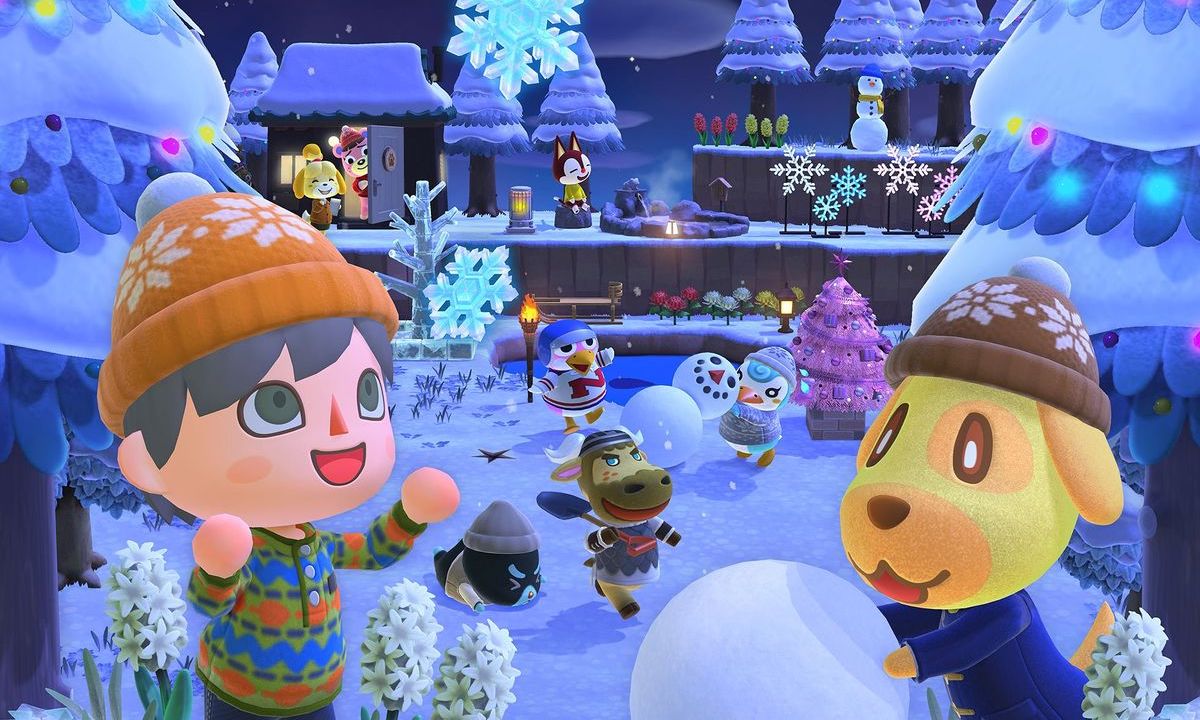
#ANIMAL CROSSING LOGO GAMECUBE SOFTWARE#
On modern progressive displays, the difference in video quality boils down to 240p appearing more "pixellated" than 480i/480p/576i at the same size due to the lower amount of visual data making up the image, while 480i and 576i appear to have a "combing" effect on moving parts of the image without any deinterlacing software active. In PAL regions, Animal Crossing is officially playable solely in 576i, the only common video resolution for these regions at the time progressive scan support had to be hidden or removed on PAL GameCube games according to Nintendo's standards. Like most GameCube games, however, Doubutsu no Mori + and its various re-releases are also capable of being displayed at 480p, a higher-quality form of standard definition video that displays all 525 scanlines simultaneously. This video quality was standard for most consumer televisions prior to the late 2000's, as well as for sixth generation game consoles like the GameCube. The GameCube versions, meanwhile, are re-rendered in 480i, allowing for double the resolution but alternating between even-numbered and odd-numbered scanlines on a frame-by-frame basis at 60 frames per second. Like most NTSC Nintendo 64 games, Doubutsu no Mori is displayed in 240p, a form of low-resolution video consisting of 320 pixels by 240, spread out to only occupy odd-numbered scanlines. The screenshots above depict December 27 and May 12, respectively, and the latter is taken from the Italian release. Dialogue in-game is altered to reflect this. The European release utilizes a 24-hour clock and a month/day dating system, rather than a 12-hour clock and a day/month dating system. In Animal Crossing, a keyboard system is used instead.Ĭlock Interface Differences between the four base versions Doubutsu no Moriĭifferences between region in Animal Crossing North America The Control Stick selects a letter, A types the letter, and pressing Down on the Control Stick switches the dial to a different set of characters (ABCDE to FGHIJ, etc.). The Japanese versions use a dial-based typing system. In the international versions, the logo animation has "Crossing" slide into view from the side, before "Animal" drops down on top of it. In the Japanese versions, the characters in the logo would rotate into view, with the "+" and "e+" suffixes in their respective versions additionally sliding in from the right to bounce off of it. The animation for the title logo sees considerable alterations between the different versions of the game. See if it's possible to get good-quality gifs of the title logo animations. Namely, the "Press Start!" message features a different font and is formatted differently in the European version (being written as "press START") and the copyright information features the same font as in e+ and a different range of years in the European and Australian versions (2001-2004 for Europe, 2001-2003 for Australia), reflecting the different release dates of the game in those regions.

In addition to the differences between the main four versions of the game, there are also slight differences in the title screen of Animal Crossing between the American, European, and Australian releases. Title Screen Differences between the four base versions Doubutsu no Moriĭifferences between region in Animal Crossing America The voices heard when starting up the game are also changed in Animal Crossing to match its western-oriented version of Animalese this is carried over to e+ as well, despite that game otherwise using the N64 and + versions' voice synthesizer for Animalese. The logo is white in Doubutsu no Mori+, red in Animal Crossing, and blue in Doubutsu no Mori e+. In succeeding games, it was the Nintendo logo that would simply fade in. In Doubutsu no Mori, it was a Nintendo 64 logo which would pop up similarly to a piece of furniture being dropped in a house or digging something up the logo's color palette would change each time the intro played, beginning with the regular logo each time the game was booted up. General Differences Startup Logo Doubutsu no Mori

1.5.2 Differences between region in Animal Crossing.1.5.1 Differences between the four base versions.1.2.2 Differences between region in Animal Crossing.1.2.1 Differences between the four base versions.


 0 kommentar(er)
0 kommentar(er)
